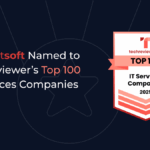Updated: February 18, 2025
Data is more than just numbers – it’s the foundation of modern business success. When leveraged effectively, it fuels innovation, enhances operational efficiency, and unlocks new growth opportunities. Yet, many organizations face roadblocks such as siloed data, cultural resistance to data-driven decision-making, and a lack of clear strategy, preventing them from fully harnessing its potential. Break down data silos↗.
According to Forrester’s Data Culture and Literacy Survey, organizations that enhance data literacy experience significant benefits, including improved productivity, heightened innovation, and smarter business decision-making. This focus on data skills helps companies work more efficiently and respond swiftly to changing market dynamics.
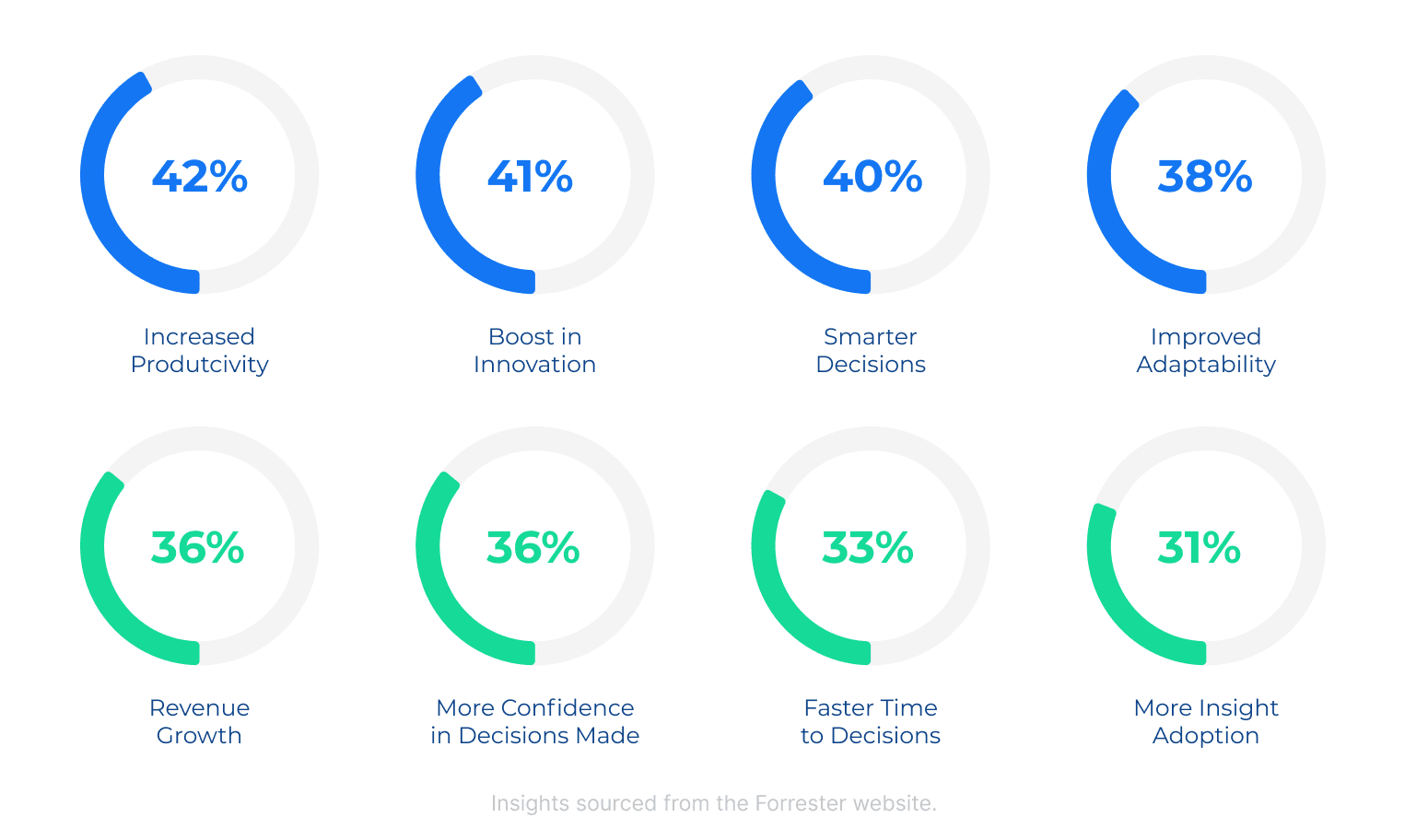
This guide provides IT leaders with a structured approach to overcoming these challenges. From fostering a data-driven culture to ensuring data accuracy and accessibility, we outline practical steps to transform data into a powerful asset that drives meaningful business change.
Step 1: Align Data Initiatives with Business Goals
Many organizations struggle to unlock the full potential of their data because they fail to align their data strategy with overarching business objectives. Without a clear connection, data initiatives risk becoming isolated projects that don’t contribute to measurable outcomes. To drive real impact, IT leaders must ensure that every data-driven initiative is purposeful, measurable, and directly linked to business growth.
Define key business objectives
Identify and prioritize strategic goals such as enhancing customer retention, optimizing supply chain efficiency, reducing operational costs, or increasing revenue through personalized experiences.
Map data initiatives to these goals
For example, if customer retention is a priority, focus on predictive analytics to track customer behavior and identify churn risks. If cost reduction is a focus, leverage data automation to streamline workflows.
Develop clear KPIs
Establish measurable success metrics, such as reducing churn by 10% using AI-driven insights or increasing supply chain efficiency by 15% with real-time tracking. Regularly review and refine KPIs based on performance data to ensure continued relevance and effectiveness.
Step 2: Create a Robust Data Management Framework
A data-driven business transformation starts with strong data management practices. Poor data quality, fragmented sources, and inconsistent reporting can undermine decision-making and hinder growth. IT leaders must focus on data integrity, standardization, and accessibility to ensure teams can trust and use data effectively.
Standardize data collection and integration.
Implement ETL processes to unify data from various sources into a single source of truth, eliminating silos. This ensures consistency across departments, making data more reliable for strategic decision-making.
Ensure data quality.
Adopt data governance frameworks that clean and validate data, ensuring accuracy, consistency, and completeness across all departments. Regular audits and automated validation rules can help maintain long-term data integrity.
Improve accessibility.
Use self-service analytics tools so business teams can access and interpret data without relying on IT, accelerating decision-making and innovation. Empowering employees with intuitive dashboards reduces bottlenecks and fosters a data-driven culture.
Step 3: Invest in Scalable Data Infrastructure
With data volumes growing exponentially, organizations need scalable, flexible, and high-performance infrastructure to support real-time analytics, AI workloads, and future innovations. Outdated infrastructure can slow operations, increase costs, and limit a company’s ability to leverage data effectively.
Evaluate cloud vs. on-premise solutions.
Cloud platforms like AWS, Azure, and Snowflake offer scalability, security, and cost efficiency, while on-premise solutions may be necessary for businesses with strict data sovereignty requirements. Hybrid models, such as AWS Outposts or Azure Stack, can provide flexibility by combining on-premise control with cloud scalability.
Implement data warehousing solutions.
Platforms like Google BigQuery, Amazon Redshift, or Snowflake help consolidate large datasets for deeper analysis and faster query performance. Optimize query performance by implementing columnar storage, indexing, and partitioning strategies to reduce processing time and costs.
Ensure high-performance computing capabilities.
This is crucial for AI, machine learning, and real-time analytics, enabling organizations to process vast amounts of data efficiently. Consider GPU-accelerated computing solutions like NVIDIA CUDA or AWS Inferentia to speed up deep learning and AI model training.
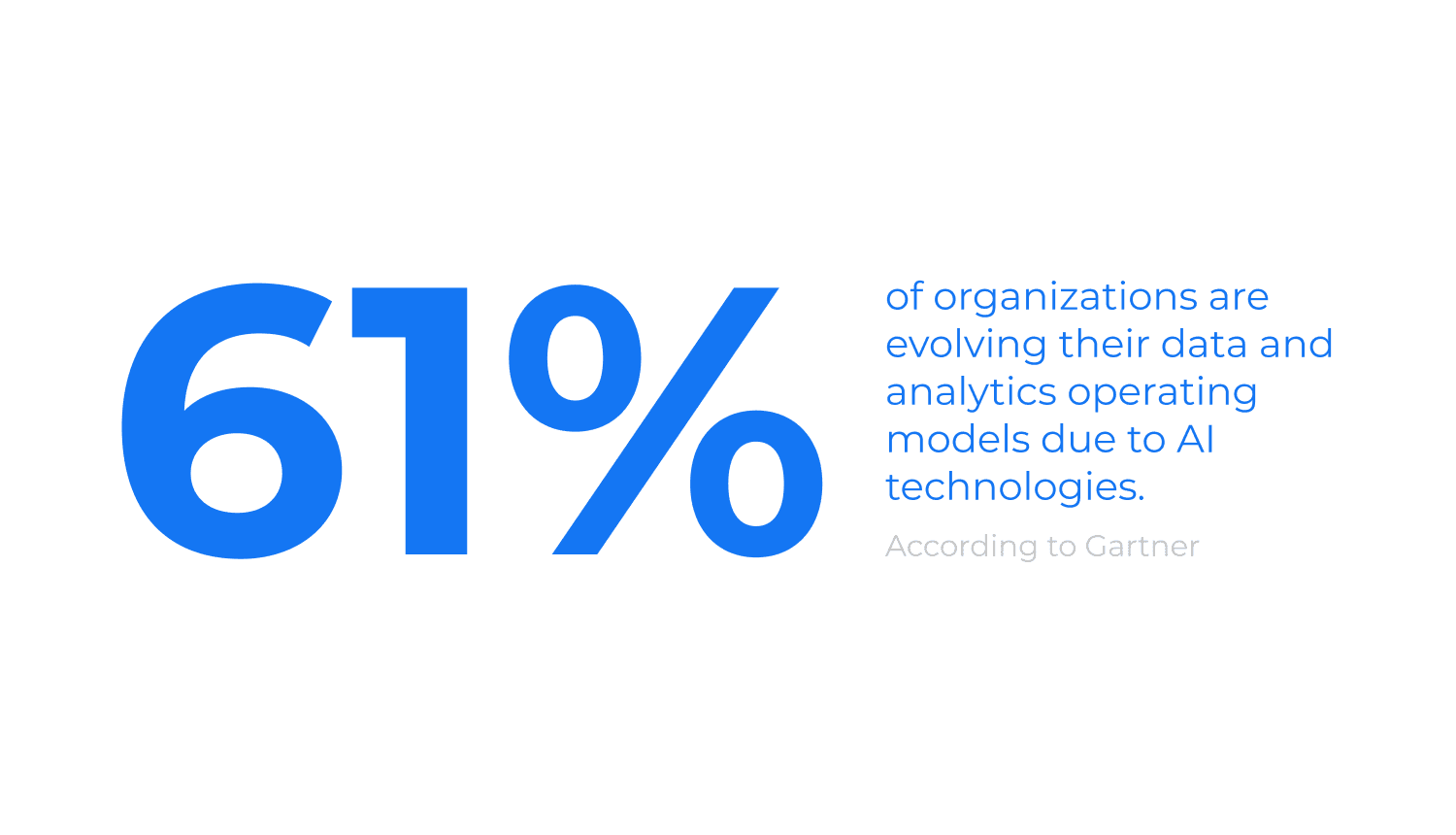
Step 4: Build Cross-Functional Collaboration
One of the biggest roadblocks to becoming a data-driven organization is data silos – when different departments collect and manage data independently, limiting visibility and accessibility. Breaking down these silos and fostering collaboration between IT and business teams is essential for maximizing data’s value. Our experts can help you choose the best solution↗.
Foster collaboration between IT and business units.
IT leaders should work closely with marketing, finance, HR, and operations teams to ensure data is shared, standardized, and used efficiently. Establish regular cross-functional meetings or data-driven workshops to align priorities and address challenges collaboratively.
Implement a centralized data platform.
Tools like Databricks or Snowflake enable cross-functional teams to work with a single, unified data source, eliminating inconsistencies. Ensure role-based access controls are in place to provide secure and relevant data visibility for different teams.
Encourage knowledge-sharing.
Establish a data governance committee with representatives from different departments to standardize data policies and best practices. Leverage internal training programs or data literacy initiatives to help non-technical employees effectively use and interpret data.
Step 5: Foster a Data-Driven Culture
Technology alone isn’t enough to drive business transformation – a cultural shift is essential. Employees at every level must embrace data-driven decision-making, using insights to guide strategic and operational choices. Without the right mindset, even the most advanced data strategies won’t reach their full potential.
Develop a data literacy program.
Provide training sessions, workshops, and hands-on experience to ensure employees understand how to analyze and use data effectively. Use real-world business cases and interactive exercises to make training relevant and immediately applicable.
Reward data-driven behavior.
Recognize and incentivize employees who successfully leverage data for process improvements, customer insights, or cost savings. Introduce leaderboards, certifications, or monetary bonuses to further encourage engagement and long-term adoption.
Ensure leadership buy-in.
CIOs and CTOs should set the example by using data in strategic decision-making and integrating it into daily business operations. Regularly share success stories and measurable business improvements driven by data to reinforce its value at the executive level.
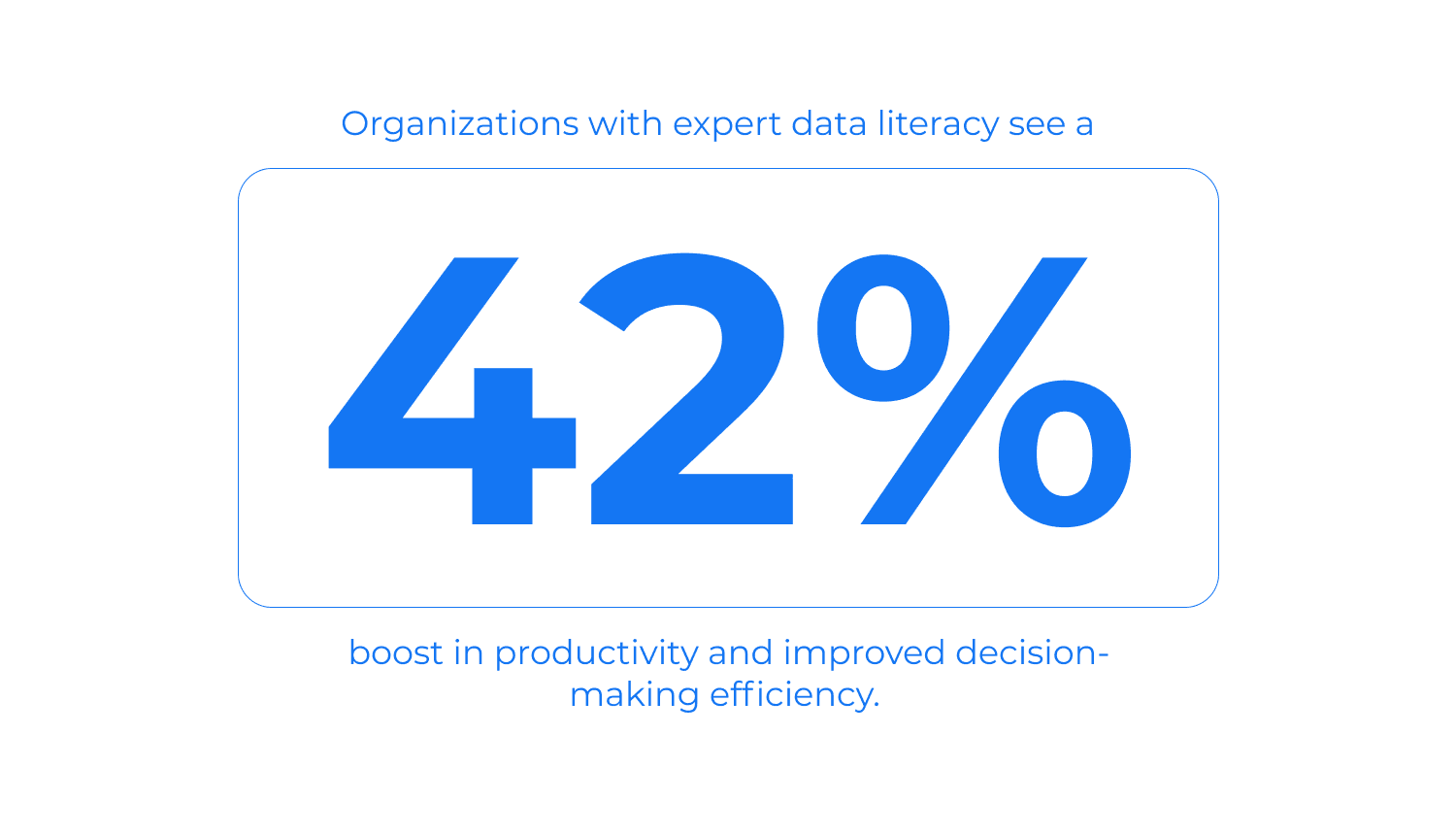
Step 6: Leverage Advanced Analytics and AI
The final step in a data-driven business transformation is moving beyond basic reporting and embracing AI, machine learning, and predictive analytics to drive proactive, data-backed strategies. Organizations that successfully implement advanced analytics gain a competitive edge by making faster, smarter decisions.
Use predictive analytics for forecasting.
AI-driven tools help organizations anticipate market trends, optimize inventory, detect potential risks, and improve customer retention strategies. Incorporate real-time data feeds and anomaly detection to refine forecasts and quickly adapt to shifting market conditions.
Automate decision-making with AI.
Implement AI-powered solutions such as chatbots, recommendation engines, and fraud detection algorithms to enhance efficiency and real-time responsiveness. Continuously train AI models using fresh datasets to improve accuracy, reduce bias, and adapt to evolving business needs.
Use visualization tools for better insights.
Platforms like Tableau, Power BI, and Looker allow business users to interact with complex data in intuitive ways, making data insights more actionable and accessible. Customize dashboards with role-based filters and automated alerts to ensure stakeholders receive the most relevant insights when they need them.
Common Challenges and Solutions
Even with a solid data strategy, IT leaders often encounter challenges that slow down adoption and implementation. Here are three of the most common roadblocks and practical solutions to overcome them.
Challenge: Lack of Executive Buy-In
Many organizations struggle with securing leadership support for data-driven initiatives, as executives often hesitate to invest in new technologies and processes without clear, immediate benefits.
Solution:
- Start with pilot projects that demonstrate ROI on a smaller scale before expanding.
- Use real-world data insights to showcase business impact, such as revenue growth, cost reduction, or efficiency improvements.
- Tie data initiatives to key business goals (e.g., customer retention, operational efficiency) to make the case for investment.
Example:
A manufacturing company used predictive maintenance analytics on a limited set of equipment to reduce downtime by 15%. The success of this pilot convinced executives to scale the initiative company-wide.
Challenge: Resistance to New Tools & Processes
Employees often resist adopting new data tools and workflows due to a lack of familiarity, concerns about increased workload, or skepticism about the benefits.
Solution:
- Provide hands-on training tailored to different departments and user levels.
- Involve employees early in the implementation process to encourage buy-in and feedback.
- Showcase quick wins where the new tools improve workflows or simplify decision-making.
Example:
A financial services firm transitioning to self-service analytics faced resistance from business teams. By introducing interactive workshops and role-based training, they achieved 80% adoption within six months.

Challenge: Data Security & Compliance Concerns
As organizations collect, store, and analyze more data, they face increased risks related to data breaches, privacy violations, and regulatory non-compliance.
Solution:
- Implement GDPR/CCPA-aligned policies to ensure customer data privacy.
- Use automated compliance monitoring tools to detect and mitigate security risks in real time.
- Establish clear data governance frameworks to define roles, responsibilities, and access controls for data handling.
Example:
A healthcare provider handling sensitive patient data integrated automated encryption and access control measures, ensuring compliance with HIPAA regulations while enabling secure data sharing across departments.
By proactively addressing these challenges, IT leaders can accelerate their organization’s transition to a data-driven business transformation while ensuring stakeholder support, employee engagement, and regulatory compliance.
Even with the right strategy, IT leaders often face roadblocks when transitioning to a data-driven business transformation. Here’s how to overcome them:
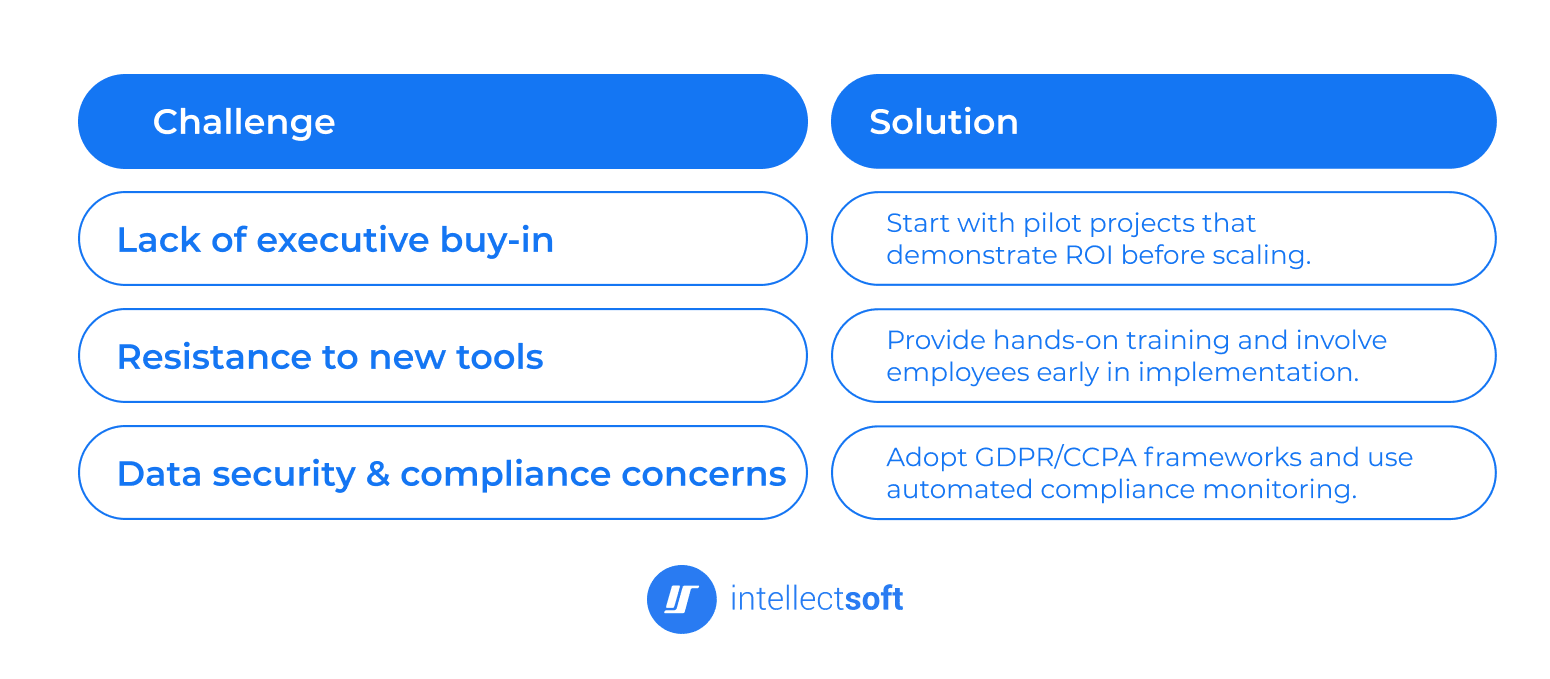
Case Studies and Real-World Examples
Leveraging AI for Trend Forecasting
Levi’s faced a common retail challenge – predicting shifts in consumer preferences and responding quickly to demand fluctuations. Traditionally, trend forecasting relied on historical sales data and industry intuition, but this approach often resulted in delayed reactions to emerging trends.
To gain a competitive edge, Levi’s invested in AI-powered analytics to process massive amounts of consumer data, including:
- Social media sentiment analysis to detect shifts in fashion trends.
- E-commerce and in-store sales patterns to identify emerging product preferences.
- Customer feedback and survey data to refine product offerings.
One of the most significant insights came when AI-driven analytics detected a surge in demand for baggy jeans, particularly among younger demographics. Rather than relying on traditional seasonal planning, Levi’s acted quickly, adjusting production schedules, inventory distribution, and marketing strategies to capitalize on the trend.
The Impact:
- Faster decision-making. The company shortened the time-to-market for trending styles.
- Increased sales and customer engagement. By aligning product offerings with real-time demand, Levi’s enhanced customer satisfaction and boosted revenue.
- Optimized inventory management. Avoided overproduction of outdated styles and reduced waste.
This case demonstrates how embracing a data-driven business transformation allows companies to stay agile, improve responsiveness, and drive sustained growth in competitive industries. Transform insights into action↗.
Centralizing Data for Smarter Decision-Making
A global investment bank faced a major challenge – fragmented data management that slowed decision-making and increased the risk of errors. Critical investment data was scattered across multiple systems, spreadsheets, and manual records, making it difficult to generate real-time insights and collaborate efficiently.
To overcome this, the firm implemented an AI-powered analytics solution that centralized data and improved accessibility:
- Mobile application to provide real-time investment insights, customizable dashboards, and instant notifications for key market changes.
- Web platform for in-depth analysis, advanced reporting, and secure collaboration across teams, ensuring role-based data access.
The Impact:
- Centralized data access. Eliminated silos, creating a single source of truth for investment data.
- Faster decision-making. Real-time insights allowed analysts to act quickly and reduce costly delays.
- Stronger security. Advanced access controls maintained compliance with data policies.
- Increased productivity. Automated processes freed up time for strategic investment analysis.
This case demonstrates how a data-driven approach enhances efficiency, reduces risk, and empowers teams to make smarter investment decisions with confidence.
Turning Data into a Competitive Advantage
Becoming a data-driven organization isn’t just about adopting new technology – it’s about creating a cultural and strategic shift that makes data a core part of how decisions are made and business goals are achieved. IT leaders play a key role in ensuring data isn’t just collected but actively used to drive smarter strategies, streamline operations, and fuel innovation.
A successful data-driven transformation requires:
✔ Aligning data initiatives with business priorities to generate real impact.
✔ Building a strong data management framework for accuracy, consistency, and accessibility.
✔ Investing in scalable infrastructure that grows with your data needs.
✔ Encouraging collaboration across teams to break down silos and improve data sharing.
✔ Developing a data-first culture where employees at all levels embrace data-driven decision-making.
✔ Leveraging AI and advanced analytics to unlock deeper insights and automate key processes.
Transitioning to a data-driven business is an ongoing process, but with the right strategy, tools, and mindset, organizations can turn their data into a powerful competitive advantage.
Ready to turn data into your organization’s biggest asset? Contact us to explore how we can help you build a future-ready data strategy.
Subscribe to updates
Source link










